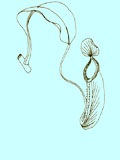

 |
 |
 |
Biodiversity Survey Results Released!!!!
Eight years ago, when Hong Kong Electric built a tunnel portal and electricity substation in the oldest and most species-rich forest patch on Hong Kong Island (the remains of which is now the Nam Fung Road SSSI), the excuse was ignorance: the site was not known to be important and the species present were not known to be rare. Despite an exponential increase in the amount of information available (documented in the pages of Porcupine!), this excuse has been used repeatedly since, as much of Hong Kong's lowland biodiversity has succumbed to development. Most generally, it has been used to justify the abysmally low standard of the ecological assessments in EIAs.
The Biodiversity Survey was intended to identify areas and species of conservation importance and thus to eliminate ignorance as an excuse. Even sites which the survey missed could be evaluated by the species present and by comparison with the best areas of similar habitat in Hong Kong. Data analysis has taken longer than we expected – most fieldwork was completed in 1996-1997 - but with the release of two major new outputs, we are finally at a stage where this is all possible. The first of these outputs is a report entitled Conserving Biodiversity in Protected Areas: Recommendations for the Extension of Protected Areas in Hong Kong, by Jackie Yip Yin, which identifies additional sites for protection on the basis of a GIS analysis of the Biodiversity Survey results for ants, amphibians, breeding birds, butterflies, dragonflies, mammals, vascular plants and reptiles. This report has been submitted to all relevant Government departments and compliments the CD-ROM of the survey data presented to the Government last year. A total of 75 sites are identified which are outside existing Country Parks, Special Areas or Restricted Areas, with a total area of 43 km2. Some of this area already receives adequate protection by other means, so only 25 km2 are recommended for more stringent protection.
The second major new output is the multi-authored Hong Kong Vascular Plants: Distribution and Status, which has just been published as volume 23 of the Memoirs of the Hong Kong Natural History Society. This a complete checklist of the 2135 vascular plant species reliably recorded from Hong Kong, annotated with information on growth form, habitats, conservation status and, for rare species, currently-known localities. Up till now, the conservation value of a plant has been assessed largely on the basis of its protection status. However, the majority of our rarest species are not protected and many of those protected are not rare, so this publication should transform the way in which the botanical importance of sites and species is evaluated.
What's next? We still have unanalyzed data, there is new information on moths, many of major insect groups, and bryophytes in the pipeline, and there are still many groups of organisms (such as the mites and nematodes) which have not yet been surveyed. Additional information will undoubtedly refine our picture of biodiversity in Hong Kong but we do not expect it to change our major conclusions. The sites that the Biodiversity Survey has already identified must be protected now if we are going to save Hong Kong's incredibly diverse flora and fauna for the future. Ignorance is no longer an excuse!
Richard Corlett
P.1
|
Porcupine! |
 Copyright © 2000 |
